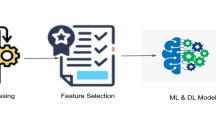Abstract
This letter presents an automated obstructive sleep apnoea (OSA) detection method with high accuracy, based on a deep learning framework employing convolutional neural network. The proposed work develops a system that takes single lead electrocardiography signals from patients for analysis and detects the OSA condition of the patient. The results show that the proposed method has some advantages in solving such problems and it outperforms the existing methods significantly. The present scheme eliminates the requirement of separate feature extraction and classification algorithms for the detection of OSA. The proposed network performs both feature learning and classifies the features in a supervised manner. The scheme is computation-intensive, but can achieve very high degree of accuracy—on an average a margin of more than 9% compared to other published literature till date. The method also has a good immunity to the contamination of the signals by noise. Even with pessimistic signal to noise ratio values considered here, the methods already reported are not able to outshine the present method. The software for the algorithm reported here can be a good contender to constitute a module that can be integrated with a portable medical diagnostic system.


Similar content being viewed by others
References
Penzel T, Moody GB, Mark RG et al. The apnoea-ECG database. In: Computers in cardiology 2000. Cambridge: IEEE Engineering in Medicine and Biology Society; 2000. p. 255–58.
Goldberger AL, Amaral LAN, Glass L, Hausdorff JM, Ivanov PC, Mark RG, Mietus JE, Moody GB, Peng C-K, Stanley HE. PhysioBank, PhysioToolkit, and PhysioNet: components of a new research resource for complex physiologic signals. Circulation. 2000;101(23):e215–20.
Hassan AR. Computer-aided obstructive sleep apnoea detection using normal inverse Gaussian parameters and adaptive boosting. Biomed Signal Proc Control. 2016;29:22–30.
Varon C, Caicedo A, Testelmans D, et al. A novel algorithm for the automatic detection of sleep apnea from single-lead ECG. IEEE Trans Biomed Eng. 2015;62(9):2269–78.
Hassan AR, Haque MA. Computer-aided obstructive sleep apnea screening from single-lead electrocardiogram using statistical and spectral features and bootstrap aggregating. Biocybern Biomed Eng. 2016;36(1):256–66.
Kumar TS, Kanhangad V. Automated obstructive sleep apnoea detection using symmetrically weighted local binary patterns. IET Electron Lett. 2017;53(4):212–4.
Koley B, Dey D. On-line detection of apnea/hypopnea events using SpO2 signal: a rule-based approach employing binary classifier models. IEEE J Biomed Health Inform. 2014;18(1):231–9.
Koley B, Dey D. Real-time adaptive apnea and hypopnea event detection methodology for portable sleep apnea monitoring devices. IEEE Trans Biomed Eng. 2013;60(12):3354–63.
Khalil MM, Rifaie OA. Electrocardiographic changes in obstructive sleep apnoea syndrome. Respir Med. 1998;92:25–7.
Pépin JL, Defaye P, Vincent E, Christophle-Boulard S, Tamisier R, Lévy P. Sleep apnea diagnosis using an ECG Holter device including a nasal pressure (NP) recording: validation of visual and automatic analysis of nasal pressure versus full polysomnography. Sleep Med. 2009;10:651–6.
Ravı D, Wong C, Deligianni F, Berthelot M, Andreu-Perez J, Lo B, Yang GZ. Deep learning for health informatics. IEEE J Biomed Health Inform. 2017;21(1):4–21.
Lee KB, Cheon S, Kim CO. A convolutional neural network for fault classification and diagnosis in semiconductor manufacturing processes. IEEE Trans Semicond Manuf. 2017;30(2):135–42. https://doi.org/10.1109/tsm.2017.2676245.
Acknowledgements
This work is supported by the grant received by Jadavpur University under UPE-II scheme of UGC, Government of India.
Author information
Authors and Affiliations
Corresponding author
Ethics declarations
Conflict of interest
All the authors declare that they have no conflict of interest in relation to the work in this article.
Ethical approval
This study meets ethical standards for engineering studies at the Jadavpur University. No humans or animals were involved in this study, thus no review by ethical committee is required.
Rights and permissions
About this article
Cite this article
Dey, D., Chaudhuri, S. & Munshi, S. Obstructive sleep apnoea detection using convolutional neural network based deep learning framework. Biomed. Eng. Lett. 8, 95–100 (2018). https://doi.org/10.1007/s13534-017-0055-y
Received:
Revised:
Accepted:
Published:
Issue Date:
DOI: https://doi.org/10.1007/s13534-017-0055-y




